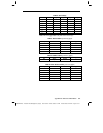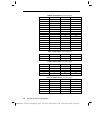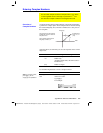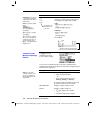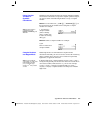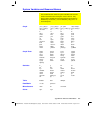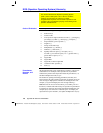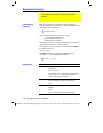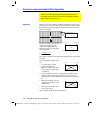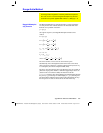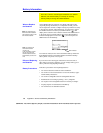
Appendix B: Reference Information 569
8992APPB DOC TI
-
89/TI
-
92 Plus:8992a
pp
b doc (English) SusanGullord Revised:02/23/01 1:54 PM Printed: 02/23/01 2:24 PM Page 569 of 34
The indirection operator (#) converts a string to a variable or
function name. For example,
#(“x”&”y”&”z”)
creates the variable name
xyz
. Indirection also allows the creation and modification of
variables from inside a program. For example, if
10
!
r
and
“r”
!
s1
, then
#s1=10
.
Post operators are operators that come directly after an argument,
such as 5!, 25%, or 60
ó
15' 45". Arguments followed by a post operator
are evaluated at the fourth priority level. For example, in the
expression
4^3!
,
3!
is evaluated first. The result,
6
, then becomes the
exponent of
4
to yield
4096
.
Exponentiation (^) and element-by-element exponentiation (.^) are
evaluated from right to left. For example, the expression
2^3^2
is
evaluated the same as
2^(3^2)
to produce
512
. This is different from
(2^3)^2
, which is
64
.
To enter a negative number, press
·
followed by the number. Post
operations and exponentiation are performed before negation. For
example, the result of
ë
x
2
is a negative number, and
ë
9
2
=
ë
81
. Use
parentheses to square a negative number such as
(
ë
9)
2
to produce
81
. Note also that negative
5
(
ë
5)
is different from minus
5 (
ì
5)
, and
ë
3!
evaluates as
ë
(3!)
.
The argument following the “with” (|) operator provides a set of
constraints that affect the evaluation of the argument preceding the
“with” operator.
Indirection
Post Operators
Exponentiation
Negation
Constraint (|)



